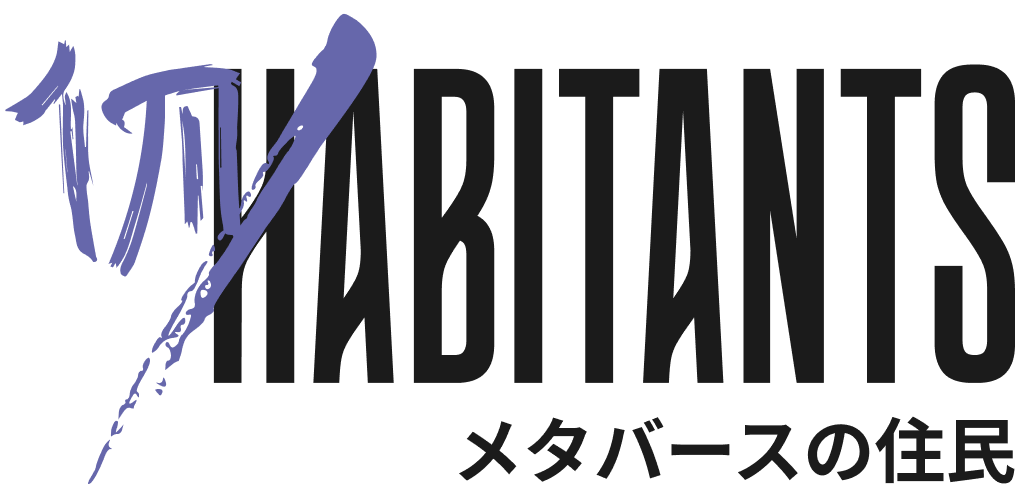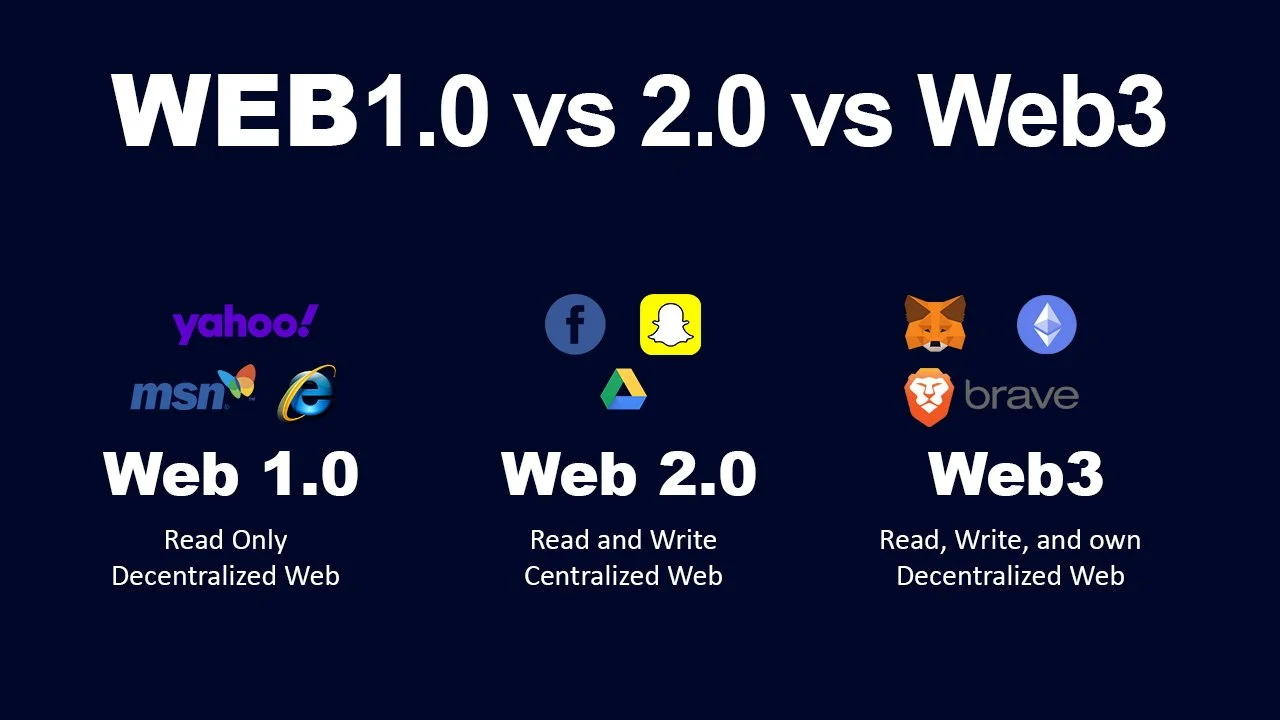Web 2.0 vs Web3 For Creators: Which One is better?
Ever since the third generation of Web for Web3 came into existence, there has been a debate about how it holds up against the trusty old Web 2.0. The internet has progressed a lot compared to Web 1.0 days; now, we’re entering the Web3 era.
The premise is to make things decentralized with Web3 and give the creators all the control they can have without the involvement of a third party. So when we talk about Web 2.0 vs Web 3, which is better for creators? Let’s find out!
in/habitats have already started exploring the creator’s community on the mirror.xyz platform. To have a better idea of how it is, you can visit our collection here.
What is Web 2.0?
Web 2 or Web 2.0 is the second generation of websites and it contains apps and websites that work with user-generated content for the end users. It is quite popular due to the user’s contribution and collaboration, basically making the world a digital village.
Web 2.0 has already been revolutionary thanks to major social media and blogging platforms. However, what sets Web 2.0 apart from the traditional World Wide Web or Web 1.0 is that Web 2.0 allows greater user participation and gives them a chance to not only view but interact with the web.
This includes publishing posts, downloading content, and interacting with each other.
How Does Web 2.0 Work?
With Web 2.0, user interactivity increased dramatically. Hence, websites with UGC or user-generated content became quite normalized. A good example of that would be our social media platforms like Facebook, Reddit, Twitter, and the list goes on. Aside from social media, you can take examples of forums, microblogging, wikis, and social networks. All these gateways allow you to give your views, participate, and interact with the web.
Another way of describing Web 2.0 is to consider it as a “read/write” web. A web where you can not only consume content but also create content. This is why creators on YouTube became such a big thing. So, from editing web pages and posting content, to communicating with other users, Web 2.0 makes it possible.
Benefits of Web 2.0
Traffic and Engagement:
The biggest benefit that Web 2.0 brings is that it lets the unlimited flow of traffic on the web. Whether you have a website or you’re using a platform, at the end of the day, you can earn and have people engaged with your content. A common example of that would be a blog or a YouTube channel.
Creators create content on various platforms and by marketing their services or taking part in sponsors, they can earn a good amount of money and it is a win-win for the creator, the audience, and the brand that’s paying you for the sponsor. Moreover, creating a profile on various platforms also lets you reach a wider audience.
Searching and Spreading Data Easily:
Another proper use case of Web 2.0 is that it allows you not only to read the data but spread information too. A lot of creators online make content to produce a positive message but sometimes negative as well. Social media and Web 2.0 in general have given us a broader and wider stance of spreading information over the web easily and it can get viral too.
The platforms have great reach and the more users you get, the wide your message will go. On the other hand, while yes, you can spread wrong information too, the pros of Web 2.0 far exceed the cons that it brings.
Business Benefits:
Almost every business and company nowadays has a website. Whether it’s a blog or an e-Commerce store, things have changed in the past two decades. There was a time when everything was physical but now, from ordering pizza to your favorite gaming console, people prefer to buy things online.
This not only benefits the users but the businesses on the backend to a wider extent. By using platforms like Shopify, WordPress, and Squarespace, people can open their dropshipping store and sell products in a company where they don’t even reside.
Moreover, blogging in itself has become a business and a huge way to build trust with the audience, get a wider range of people, and start selling your product.
Challenges of Web 2.0
No Control Over Your Data:
While many platforms like Facebook, Instagram, and Twitter allow you to protect your privacy, they’re selling your data to advertisers to ultimately gain profit from you. So this has got us thinking, is Web 2.0 really that privacy oriented?
Moreover, with platforms like YouTube and Twitch dethroning many creators for doing almost nothing wrong, the governments and the middle parties have all the control over what type of data is portrayed.
This is evident because creators like Andrew Tate, who is surely a controversial figure, got banned from Facebook, Twitter, Instagram, Uber, and Airbnb, and even got their bank accounts frozen. This shows us the power that the middle party has. Moreover, even though Web 2.0 boasts about promoting free speech, in the end, if you say something controversial enough that has the potential to reach a longer audience, the middle parties can block your whole online existence.
What is Web3?
The third generation of the internet is Web 3. It is also the hottest generation and the one that is being talked about the most because of the decentralization aspect. The premise of Web3 is that it caters to the needs of every user, gives them complete control over their data, and crafts a truly decentralized platform.
Technologies like Blockchains and Metaverse are the future of Web3 because of the innovation they bring to the table for us. Even though it seems like Web 2.0 and Web3 are quite literally similar, they do have a lot of differences. We will talk about them in a bit.
The main goal of building Web3 is to promote a decentralized web. This means that users will own their content and have complete control over the internet. There won’t be a middle party involved to sell your data or cancel you.
So, let’s talk about how it works.
How Does Web3 Work?
The term Web3 was formed by Ethereum’s co-founder Gavin Wood in 2014. On Web3, the data is generated decentralized. This means that the users have complete control of their data. It all started when Ethereum was formed and Blockchain tech started becoming big. Web3 works by putting privacy and ownership of data first. This is because no organization, government, and middle party are involved in carrying out your data at all.
Web 3 is changing the internet. From managing your data to portraying it on the web, things are becoming quite interesting and exciting in the future. So let’s talk about the benefits of Web 3.
Benefits of Web3
1. Ownership of Data:
When we talk about platforms like YouTube, Facebook, and Instagram, your data is stored on their servers and they monetize solely by selling your data to advertisers. Moving forward to Web3, your data is stored on Blockchain which is decentralized. When you engage with the apps and websites on the blockchain, once you log off, you take your data with you (in theory), meaning that no one can reuse, sell, or gain profit from it.
It is solely your choice whether you want to monetize your data or not. A good example of this will be in/habitants publishing content on a platform called Mirror.xyz. You can check the collection here. From Mirror.xyz, users can earn money in the form of cryptocurrency and have complete control over their data. This is almost not possible with Web 2.0, where you’re using services that constantly sell your data.
Another example would be in/habitants Webtoon on OpenSea. Platforms like OpenSea allow you to own a piece of art or any other collectible. You can buy these collectibles for cryptocurrency and have complete control over what you buy. No one can resell and gain any profit from your owned pieces and that is what ownership of data actually is.
2. Democracy:
Democracy is quite appreciated in the world of Web3. Apps are run by various DAOs (Decentralized Autonomous Organizations) on Web 3. But who makes the decisions for the future of the web? It’s the users with the most participation and the ones who have the governance tokens on the platform that make all the decisions.
Challenges of Web3
Scalability is one of the biggest challenges of Web3. When we talk about security, decentralization, and scalability, all these things go hand in hand. And to aim for scaling the platform, many Web3 platforms go back to centralization which sort of beats the whole purpose of Web3. This is why Ethereum is making so many changes in 2022, to have enough room for growth while making sure that its platform is decentralized and secure.
If scalability is preferred on a bigger scale, it would risk security and decentralization all in all. This term is called Blockchain Trilemma. Hence, blockchain giants like Ethereum have always started making changes to solve the Trilemma in order to make the world of Web3 scalable and brighter.
What is Web 3.0 and How Is It Different Compared To Web3?
Web 3.0 is the future generation of the web which is also known as the semantic web and an extension of the World Wide Web that uses the World Wide Web Consortium (W3C). The main aim of Web 3.0 is to make the internet smarter by making important decisions with the use of Artificial Intelligence.
The term was introduced by Tim Berners-Lee who predicts that our day-to-day lives will be handled by machines talking to machines. While both terms are confused together sometimes, they are quite different from each other.
Web3 focuses on security, empowerment, and decentralization while Web 3.0 is all about using Artificial Intelligence and making our lives easier. Moreover, both Web3 and Web 3.0 use different technology to fulfill their purpose. For example, Web3 focuses more on blockchain technology while Web 3.0 is about advanced tech like RDF, OWN, SKOS, and more.
Web 2.0 vs Web3 - What’s The Difference?
Having such similar backgrounds, Web 2.0 and Web3 have different stances compared to each other and they have different applications as well. The main focus of Web 2.0 is to focus on user-generated content, reading, and writing it. However, Web3 is all about creating content on a Semantic Web.
Web3 does a better job of using innovative technologies while putting security as the priority. It builds trust and gives users complete control of their data. Moreover, while we’re on this topic, we can talk about the differences that set them aside.
1. Content Ownership:
Web 2.0 controls everything you have on the internet. Everything is being controlled by middle parties, the government, and the platform that you’re using. On the other hand, on Web3, everything you have is owned by you.
So for example, on Web 2.0, let’s say that you post a video on YouTube. And while it is technically your video, YouTube or even the government can get it banned. This is opposite to Web3 where everything you own is yours and yours only. Whether you’re buying an NFT, no one can sell that NFT separately and gain profit from it.
2. The Currency:
Fiat money is supported on Web 2.0 which is a government-issued amount like the US dollar. However, Web3 uses cryptocurrencies and coins like Ethereum, Bitcoin, and many more. These coins are digital currencies that run a specific platform.
3. Speed:
What Web 2.0 does better than Web3 is that it sends and receives data much more quickly. This is because all the information is stored on a single server using the HTTP as the web address. However, Web3 is all decentralized and your data is not in one place which is much safer but less quick.
4. Web 2.0 Posing Challenges for Small Creators:
Since Web 2.0 is controlled by authorities and companies, small creators often suffer. Firstly, all their data is being sold to bidders on the backend and they sell the users’ data to bidders to earn money.
Moreover, platforms like Instagram have complete control over what links you put and where you’re putting the links. Moreover, the large companies also take a big cut from the profit that you make. Consider an example of Twitch, YouTube, or most other streaming platforms.
They can charge you up to 30% of the profit that you make which is quite bad for new creators. In Google Play and App Stores, companies cannot compete with the heavy fees since the taxes and the cost of making the products are already so high for the creators.
Moreover, these big tech companies then pay you around 50% and even get a cut from in-app purchases. A huge example of that would be the App Store squeezing money from NFT marketplaces. The Sticky NFT is a big example since they had to pay a 30% commission on all the in-app purchases that users did.
This is why a lot of developers are moving away from these big tech companies and moving onto Web3 where things are much more under their control. Platforms like Mirror.xyz allow creators to not only have true freedom of speech but also create the content they want and have complete control over it.
Difference Between Web 1.0, 2.0, and 3
Web 1.0:
Era: 1996-2004
Web 1.0 is read-only. You cannot make or create content but can only consume it. It is in the form of static media and only companies handle Web 1.0 for their consumers. Web 1.0 is decentralized and contains only a few powerful computers responsible for displaying data on the web.
Web 2.0:
Era: 2004-2016
Web 2.0 is a read-and-write web where anyone can create content on various platforms like Reddit, Facebook, Blogs, Instagram, and countless others. The data on Web 2.0 is stored on the cloud which is Big Tech Data Centers. However, Web 2.0 is centralized and is monitored and controlled by a central authority.
Web3:
Era: 2016-Present
Web3 lets you read, write, and own a piece of the internet and they are run by Decentralized Organizations. They work with the InterPlanetary File System which gives users complete control over their data. Along with creating content, users can even own a part of the web. A big example of that would be NFTs or Crypto.
How does Web3 Solve Web 2.0’s Problems?
Web3 is the future because of decentralization since every person will be in control of his data. Web3 leverages the potential of Blockchain to limit your data’s access in a secure and better way. This way, your data cannot be changed or destroyed by anyone.
For creators, it is quite literally the best thing since privacy is a big concern in today’s world. From content ownership, the threat of hacking, censorship, and control, to misinformation, Web 2.0 seems to be lacking in a lot of these areas. This is where Web3 shines and it can solve the majority of these Web 2.0 problems.
How Will Web3 Revolutionize the Creator Economy?
Web3 provides a safe space for all the Da Vinchi and Michaelangelos to show their creativity, passion, and their enthusiasm without having to be stopped by anyone. Not only creatives will have complete control over their work but their fans also benefit from their work in an “owning-oriented” space.
For example, let’s say that a singer decides to launch his or her NFTs. They can use the NFTs as a token of authenticity or even as their concert tickets. There’s so much that can be done with Web3 for creators and we truly believe that the future of the internet is indeed decentralization.
Disclaimer: The views and opinions expressed in this content are those of the speakers and do not necessarily reflect the views or positions of any entities they represent.






